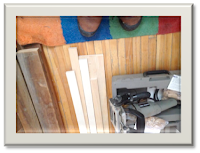Creating a Culture of Innovation #SAVMP 6
I like this weeks Blog challenge. It meshes with one thing
I am trying to do throughout #SAVMP: I am trying to not read anyone else’s blog post until I post mine.
This way I am pushing my creativity and
expression to come from within and not from elsewhere.
Today I present some Muppets, a couple
of “having said that…”s and a Steve Jobs tie in with a twist.
If a teacher came to an interview and said that they had the
school year charted with a daybook and it was all mapped out, consistently
delivered from year to year - just like the teacher across the hall…would you
want them to teach your students?
When I was a kid I watched a lot of TV. In the early days my favorite program
was probably Sesame Street. I have
a lot of memories of the Muppets, Mr. Hooper and Bob. I recall the way they lived and interacted with anyone who
was their neighbour…regardless of race, gender, species or occupation. During a
Sesame Street Fable segment called The King and the Fireman, Bob told
the story of a king impressed with the work of the fireman and declares that
everyone in the kingdom should become firefighters. Through the fable I learned the woes that happen to the
kingdom if everyone becomes a firefighter: No one cooks; No one helps; No one
delivers the mail. This cautionary
fable has woven itself into my memory and has actually resurfaced a few times
in adult life during discussion of creativity and innovation. When we see the success of others and
try to become what they are or do what they are doing, we run the risk of
becoming clones and not generating new practices.
Having said that, don’t let me mislead you into thinking it
is not good practice to checkout and adopt other’s good practice. When
we see success we need to reflect and review our practice in the light of the
success. Where can we adopt
things, trim things and grow? Bob’s
fable cautions that we shouldn’t lose all of our identity becoming something
else – there is the idea of everyone in the kingdom learning how to be a
firefighter for emergencies.
Have you worked with school administrators who are really
good at completing the checklist, getting agendas out, ensuring the school year
is completed with a solid performance?
In my experience with these types of principals very little originality
is seen; in the continuity of the years, staff starts to take on a pack mule
attitude, not having to even look where they are going because they know the
steps in the cycle already.
Innovation is usually at an all time low.
Here is the cycle as I’ve seen it:
Set school goals.
(Maybe with dot stickers).
Set personal goals.
(Maybe in groups)
Work Work Work.
(Maybe we are all firefighters)
Write goal summaries.
Write personal goal summaries.
Write provincial document using data to verify
progress.
Start again.
It sounds kind of dull. It feels kind of dull.
Not much creativity and energy – but paper is all done. Check!
Having said that, it is really important to be good at
getting your paperwork done. We
need to have the machine running to enable innovation to happen. We also take results in student learning very seriously and data collection is
imperative for tracking gains in learning.
In an earlier post I mentioned a PATH planning tool we use to
establish our vision and our goals.
Goal setting is where innovation begins. The team and many stakeholders in the school community gather to review
the strategic plan, the school values, mission statement and history. Together they create a perfect world
vision for the school and set goals together. In collective
creativity the goals are always POSITIVE and POSSIBLE. Sometimes they are even innovative. Team members attach their names to their goal(s) that they
are passionate and/or interested in.
The goals are checked on periodically and reported to the entire staff
team.
Having said that, our current team is due for a revisioning
PATH session. (That’s for the Bison’s who might be reading)!
As I work with school teams I like to
start each year by
celebrating our successes from the previous years and reviewing our goals for
the upcoming year.
The current
team I work with knows that I always end this session with a last goal…a
Jobsian ‘one more thing’.
Unlike
Jobs, the totalitarian leader, the last thing I add is a line I learned from my
pastor:
our last goal is always
“Something we don’t know yet.” This one line is my favorite motivator
of the year.
It allows our team to
follow our path and yet have the opportunity to break out of the cycle and
engage something that might be “spontaneous” or “
innovative”!
There is a safety net for those who
need one; all our goals need to be vetted against our vision.
We have had some very successful
innovative projects in our time together including but not limited to:
complete fundraising and building of
two playstructures in one school year; recreating and renovating our library
into a Learning Commons, raising five thousand dollars for renewing the library
collection, recording song mosaics, school songs and making videos.
You can see some of these on our
YouTube channel:
http://www.youtube.com/user/BrooklandsSJSD/videos
Or you can check out the school blog at brooklandselementary.blogspot.ca
Our team has taken many innovative ideas and woven them into
our common practice. School teams
starting on a journey of innovation and change may find themselves overwhelmed
at the complexity of high performing teams – remember, one strategy/practice at
a time.
As a school leader you can
create a culture that allows innovation and brings energy to your school
community. Start at the beginning by including an avenue for innovation in your goal setting practice.
Cheers,
RexFB



